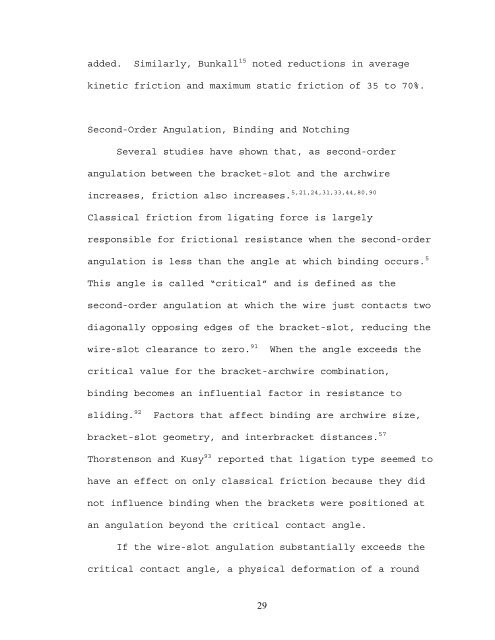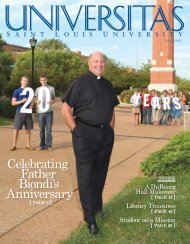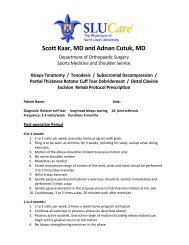The effects of third-order torque and self - Saint Louis University
The effects of third-order torque and self - Saint Louis University
The effects of third-order torque and self - Saint Louis University
You also want an ePaper? Increase the reach of your titles
YUMPU automatically turns print PDFs into web optimized ePapers that Google loves.
added. Similarly, Bunkall 15 noted reductions in average<br />
kinetic friction <strong>and</strong> maximum static friction <strong>of</strong> 35 to 70%.<br />
Second-Order Angulation, Binding <strong>and</strong> Notching<br />
Several studies have shown that, as second-<strong>order</strong><br />
angulation between the bracket-slot <strong>and</strong> the archwire<br />
increases, friction also increases. 5,21,24,31,33,44,80,90<br />
Classical friction from ligating force is largely<br />
responsible for frictional resistance when the second-<strong>order</strong><br />
angulation is less than the angle at which binding occurs. 5<br />
This angle is called “critical” <strong>and</strong> is defined as the<br />
second-<strong>order</strong> angulation at which the wire just contacts two<br />
diagonally opposing edges <strong>of</strong> the bracket-slot, reducing the<br />
wire-slot clearance to zero. 91 When the angle exceeds the<br />
critical value for the bracket-archwire combination,<br />
binding becomes an influential factor in resistance to<br />
sliding. 92 Factors that affect binding are archwire size,<br />
bracket-slot geometry, <strong>and</strong> interbracket distances. 57<br />
Thorstenson <strong>and</strong> Kusy 93 reported that ligation type seemed to<br />
have an effect on only classical friction because they did<br />
not influence binding when the brackets were positioned at<br />
an angulation beyond the critical contact angle.<br />
If the wire-slot angulation substantially exceeds the<br />
critical contact angle, a physical deformation <strong>of</strong> a round<br />
29
















